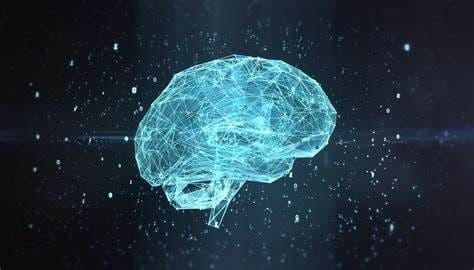
AI Terminologies Every Techie Should Know Of
In recent times, the term AI has become a household name and alongside that term, lots of technical jargon is used with it.
AI Terminologies Every Techie Should Know Of.
In recent times, the term AI has become a household name and alongside that term, lots of technical jargon is used with it. Many of these jargon are pretty new to the industry as they evolved out of the need to give naming to new updates. Many others have been in existence for long, but in spite of all this, one thing still stands out. These terms are often confusing leaving both techies and non techies in a state of confusion.

In this article, I'd be taking you on a journey on the most terms when it comes to Artificial Intelligence to help you better understand this wonder of the world and equip you with a good foundation on how to prepare yourself for it.
By the end of this article, you'd be:
- Knowledgeable about many AI jargon.
- Able to distinguish many interchangeably used terms.
- Able to learn of new AI tools.
So as not to waste your time on irrelevant things, I'd delve immediately to them.
√ GPT: Generating Per training. A model of AI popularised by Open AI that allows AI to generate human-like text.
√ Prompt:
A text, command or set of instructions that's given to AI models to generate responses.
Also known as Artificial Narrow Intelligence or weak AI. These types of AI are limited by their programming and can't perform actions beyond their capabilities. Examples are ChatGPT, Siri and Google Assistant
Also known as Artificial General Intelligence. General AI are categories of AI models that can perform extensive actions beyond their programming. They're capable of learning just like humans and are yet to be made practical.
AI that technically outperforms humans in intelligence. These forms of AI are still very far from being accomplished and just like AGI, they're usually used in SciFi movies.
√ Robotics AI:
This is the incorporation of AI in developing robots to perform tasks autonomously or semi-autonomously.
√ ChatBot:
A computer program that works in a conversational style, taking in prompts as questions with keywords and responding with appropriate answers. Examples include ChatGPT, Google Assistant and Snapchat's AI.
√ ChatGPT:
A type of ChatBot developed by Open AI that generates contents.
√ Bard:
A ChatBot developed by Google.
√ GenerativeAI:
A type of AI model that uses matching prompts to generate responses on already known subjects. Many AI fall into this category, while some others like ChatGPT can be said to be both generative and predictive AI while having greater affinity for one category.
Examples of AI that fall into generative AI are ChatGPT and every AI that leverages the GPT API, Image generating and enhancing AI like midjourney and stable diffusion.
√ PredictiveAI:
A type of AI model that's trained to use input prompts and generate occurrences that's likely to happen. It does this mainly by analysing past occurrences that match with the data, runs some mathematical computing on probability and gives out the estimated possibility of that event happening.
This AI is usually used by weather forecasts, medical institutions, betting organisations, etc. Google Photos use some sort of Predictive AI models to predict and match faces that look alike.
A form of AI that deals with the training of algorithms to learn patterns and respond from learned data.
A type of ML that leverages neural networks with lots of layers to execute complex actions like image and speech recognition.
A computer model inspired by the working mechanism of the human brain. It's used in enabling computers to learn and execute actions. The human brain works as a result of neural connections among neurons and it's this method that a computer neural network is worked upon.
√ Natural Language Processing (NLP):
A subset of AI that allows computers to understand, convert and also generate human languages to communicate with humans.
This AI technology is what enables computers to interpret and understand visual information from images or videos. Google Photos, Bing AI, Snapchat and even Phone Cameras utilise this AI.
√ Algorithm:
A set of step-by-step programmed instructions used in the development of an AI for the solution of a specific problem or for performing an action.
A ML method where AI models are trained using labelled data. In this case, the output is known already as it is instructed in the algorithm.
A ML method that trains AI models using unlabelled data to allow them to learn patterns for solving problems.
Allows AI to learn from their environment just like humans and receive feedback from that same environment.
Ethical and legal guidelines that are to be obeyed in the development of any AI model.
√ AI Bias: Unintended responses from AI as a result of a bug or exploitation by malicious agents.
A mathematical representation used by AI systems to make decisions based on programmed data.
Data used to develop AI models during the development and throughout its existence.
If you're interested in getting into the field of Artificial Intelligence, you should explore deeper into these terminologies as they'd serve as a foundational guide for your transition into that field.
In addition to this, you can also check out platforms where you can learn of AI.
Some of them are GeeksForGeeks, Coursera and Udemy.

